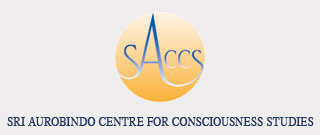WRITINGS BY THE MOTHER
© Sri Aurobindo Ashram Trust
Widening the Physical Consciousness
3 February 1954
This talk is based upon Mother's essay "Vital Education".
"In some ancient initiations it was stated that the number of senses that man can develop is not five but seven and in certain special cases even twelve. Certain races at certain times have, out of necessity, developed more or less perfectly one or another of these supplementary senses. With a proper discipline persistently followed, they are within the reach of all who are sincerely interested in this development and its results. Among the faculties that are often mentioned, there is, for example, the ability to widen the physical consciousness, project it out of oneself so as to concentrate it on a given point and thus obtain sight, hearing, smell, taste and even touch at a distance."
What are the names of these twelve senses?
The names? In the Chaldean tradition they were in Chaldaic. In other traditions, in other languages; in Egypt they were written in hieroglyphs. Each system gave its names. I had a list of the names--not only of the names but also of what they represented, what kind of sense each represented--but it was a very long time ago, I don't remember them any longer. As I have said there, it is in the field of things seen, felt, done at a distance by a concentrated projection of consciousness. For instance, one is in a room and, due to an illness or an accident, one cannot move. Next to this room there is another; next to that there is a sort of bridge; after the bridge there are steps going down; and these steps go down to a big studio in the middle of a garden. Now, the person laid up in the room wishes [old p. 11] to know what is [new p. 11] going on in the studio. He concentrates his con sciousness and then extends it, so to say (truly it is as though he extended it almost materially), and he goes along the whole way and reaches the studio. If he does this properly, he sees what there is in the studio, can hear what is going on, though he is not there himself: the body is lying in a bed in a room, but the consciousness is projected. It is a physical consciousness. It is not an inner state, for one sees physically, hears physically. If there are people in the room one sees them, and if they are speaking one hears them speaking. Naturally, it is not from the very first day that one succeeds; it asks for a very rigorous dis cipline. It corresponds a little (a little) to that capacity which was developed in the Red Indians due to the conditions of their life. I don't know how it is at present, but formerly they used to put their ear to the earth, and they had so fine an ear that they could hear steps more than a mile away. They heard the steps of those who were walking at a distance of more than two or three kilometres simply by putting their ear to the ground. Or take the dog which, if given something to smell, finds the trail of that scent again, can follow it with its nose. Well, it is one kind of super-sense, that is, a sense that has reached such a degree of intensity and refinement that it can indeed feel what the ordinary sense does not feel, can see at a distance, really see, see physically at a distance, through walls. It is said that the blind develop a sense which enables them to feel an object at a distance. They do not see, they walk in darkness as in a black night; but they have a kind of sense of touch at a distance, a material contact due to which, long before touching the object, they know; for example, if there is a piece of furniture in their way, long before knocking against it, they feel it from a distance.

